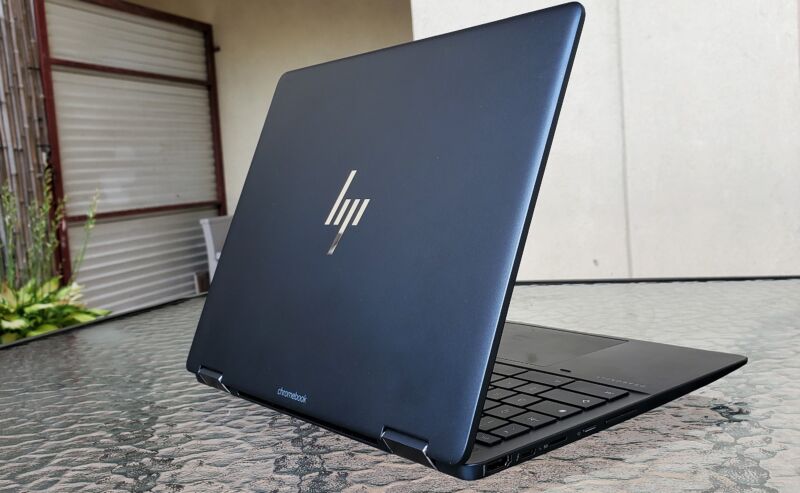Review: HP’s Elite Dragonfly Chromebook is the cream of the ChromeOS crop
by Scharon Harding from Ars Technica - All content on (#62P6Q)

Enlarge / HP Elite Dragonfly Chromebook.
| Specs at a glance: HP Elite Dragonfly Chromebook | |||
|---|---|---|---|
| Worst | Best | As reviewed | |
| Screen | 13.5-inch 1920 x 1280 IPS touchscreen | 13.5-inch 1920 x 1280 IPS touchscreen | 13.5-inch 2256 x 1504 IPS touchscreen |
| OS | Chrome OS | ||
| CPU | Intel Core i3-1215U | Intel Core i7-1265U vPro | Intel Core i5-1245U vPro |
| RAM | 8GB LPDDR4-4266 | 32GB LPDDR4-4266 | 8GB LPDDR4-4266 |
| Storage | 128GB NVMe PCIe 3.0 SSD | 512GB NVMe PCIe 3.0 SSD | 256GB NVMe PCIe 3.0 SSD |
| GPU | Intel Iris Xe | ||
| Networking | WiFi-6E, Bluetooth 5.2 | ||
| Ports | 2x Thunderbolt 4, 1x USB-A,1x HDMI 2.0, 1x 3.5 mm jack, 1x MicroSD card reader | ||
| Size | 11.59 x 8.73 x 0.65 inches (294.38 x 221.74 x 16.51 mm) | ||
| Weight | Starts at 2.8 lbs (1.27 kg) | ||
| Battery | 50 Wh | ||
| Warranty | 1 year | ||
| Price (MSRP) | $980 | $1,800 | $1,709 when configured on HP.com |
| Other | N/A | 4G optional |
Chromebooks are tired of being treated like second-class citizens.
Over the last decade, the developers of ChromeOS have attempted to evolve the operating system with features that could put it more on par with macOS and Windows. Google has been pushing Chromebooks as business machines, touting the purported simplicity and security benefits of their pared down operating system.
HP's new Elite Dragonfly Chromebook represents a ChromeOS device pushed to the limits, from its appearance to its components.